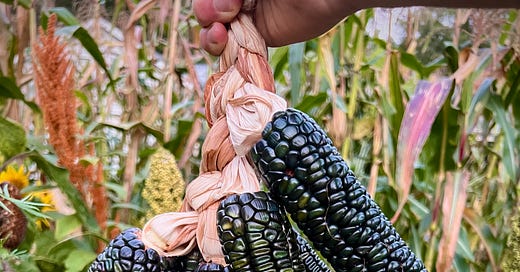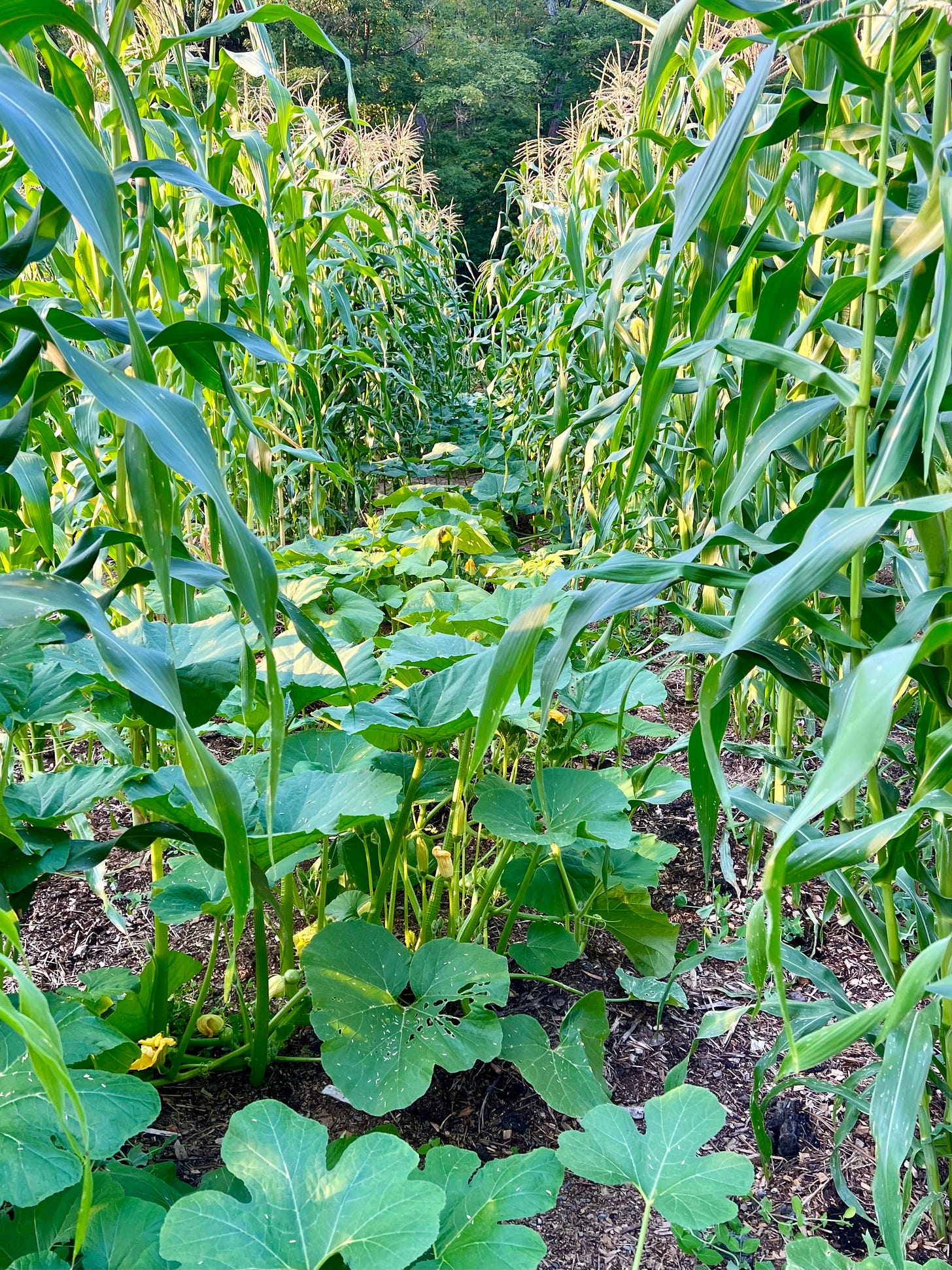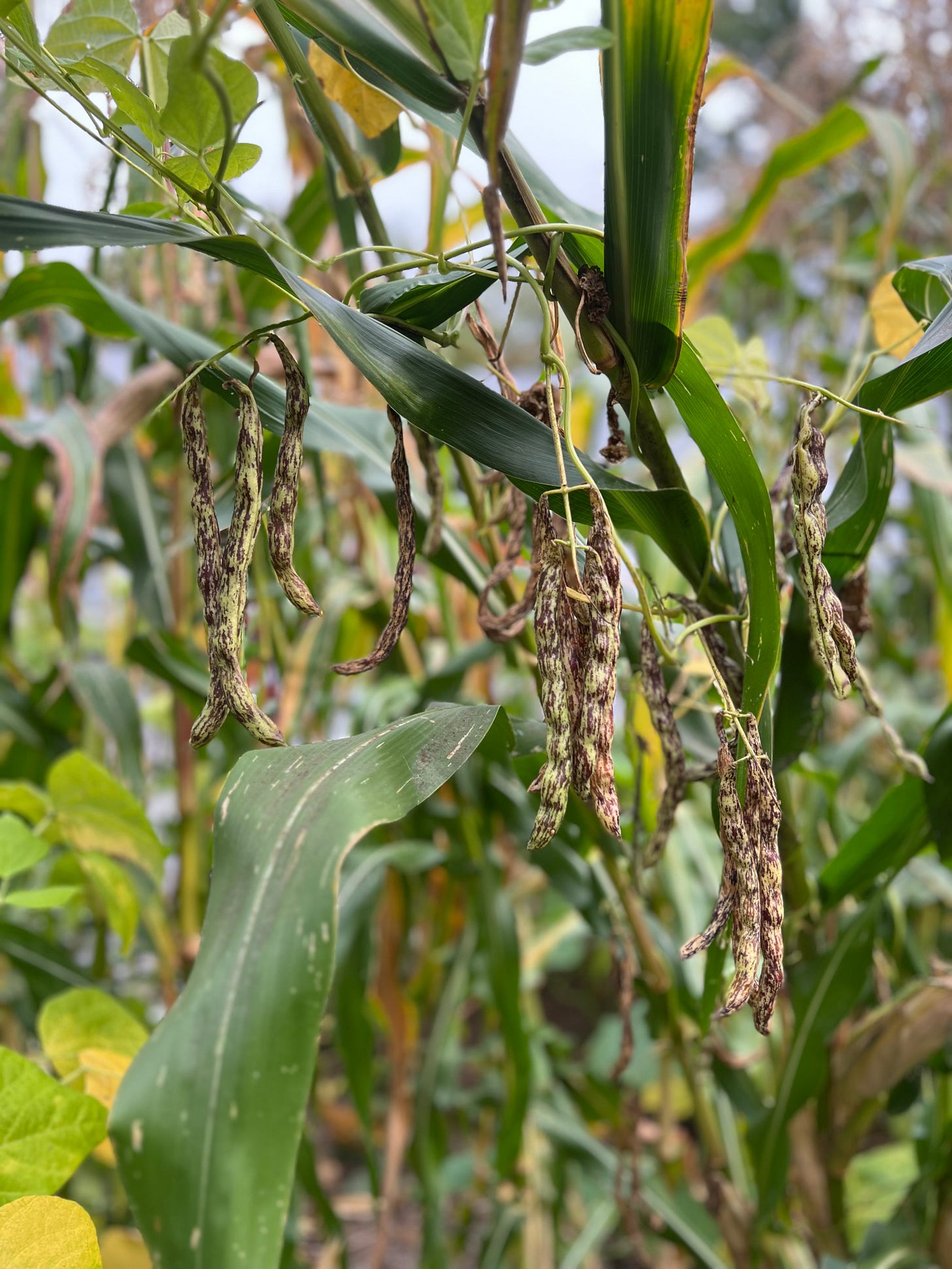Growing the 3 Sisters: Results & Lessons
A postmortem on my first foray into the ancient corn, beans, and squash polyculture
This summer, I grew a 3 Sisters field: roughly 7,000 sq ft of corn, beans, and squash. It was my first foray into growing this ancient annual polyculture, and the results were very impressive. I learned several important lessons along the way—things that I did not discover in my research last winter—which will change the way I grow the 3 Sisters going forward.
Here's the breakdown.
Win: Corn was by far the most successful of the 3 main crops in this experiment
There were many reasons for this but the biggest was the variety I selected: "Oaxacan" green dent corn (almost certainly bred in Minnesota, not Oaxaca.) It was the only variety I planted because mingling corn varieties requires staggering the timing of planting or maturation, and I wanted all of the corn to grow at the same pace for the sake of the beans (one goal of the 3 Sisters is to harvest everything at once in order to keep work to a minimum.) My research indicated that green dent was well-suited to my short growing season, and indeed it was.
I soaked the corn seeds for 24 hours and kept them moist to sprout in trays, which they did 3 days later. I then planted them in relatively deep 2-3" holes (due to the field's poor moisture retention) on May 29th, two weeks after average last frost. My average first frost is October 5th, leaving me with a short season for dent corn, which needs to dry out most of the way in the field.
Fortunately, green dent had no problem maturing and drying in time. It grew extremely fast, didn't slow down at all during difficult stretches of weather, and reached a towering 10 feet in height. The stalks were very sturdy, crucial for the sake of the climbing beans, and most plants yielded two ears each. Despite the added weight of the beans, I only had a couple of stalks come down in a severe wind storm.
It's important to grow dent corn rather than sweet corn in a 3 Sisters planting because you can't walk through the field without damaging the squash, making it impractical to harvest sweet corn while the squash and beans are still growing. This means that you're growing corn for flour, masa, hominy, etc (although I do think you could theoretically get away with a row of sweet corn on the outside of the field, so long as it matures at least 2 weeks before or after the dent corn.)
I spent a lot of time figuring out which dent corn would offer the most versatility and flavor, and so far I am very pleased with the results I've gotten from green dent. The flavor is very "deep" and rich, making outstanding corn bread and hominy. I'm looking forward to making masa with it soon; the dream of venison tamales looms large.
I experimented with several different planting densities for the corn, and I found that they performed best in large, dense circles of 9-12 plants. Less densely planted hills of 5-7 plants tended to produce very thick stalks with multiple side ears (small, generally unusable ears on lateral shoots), resulting in a lower yield per square foot.
Lesson learned: Beans were a mixed bag






